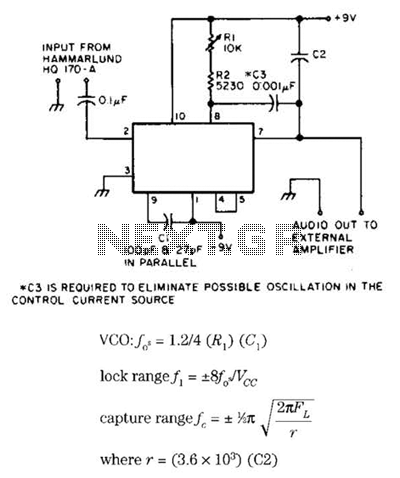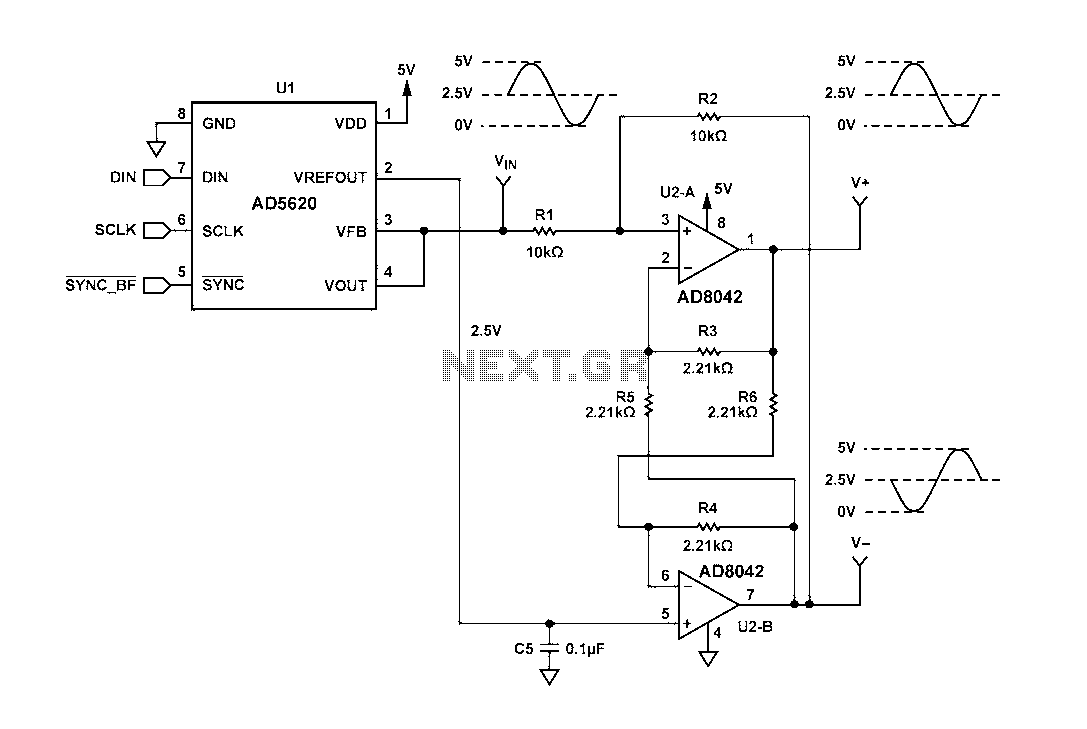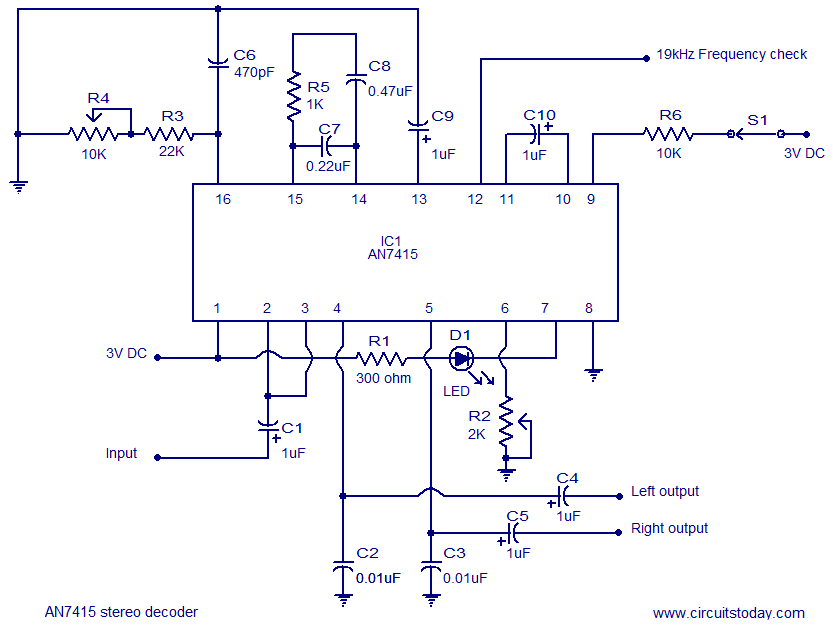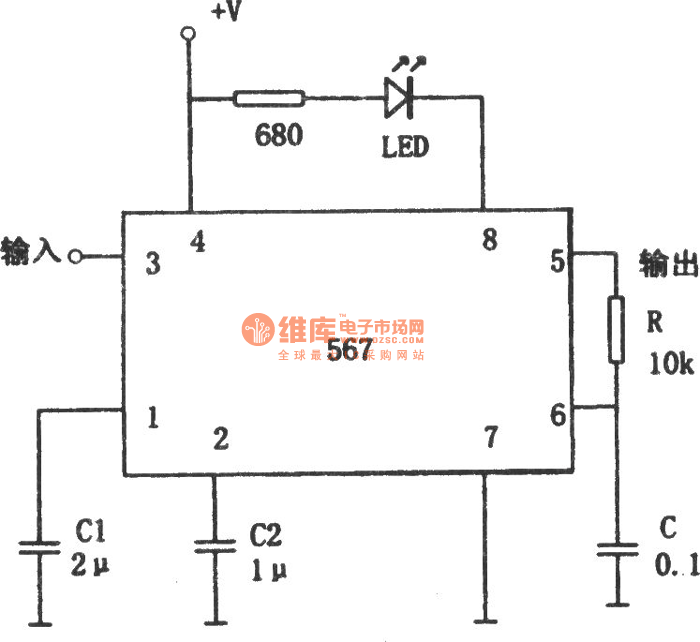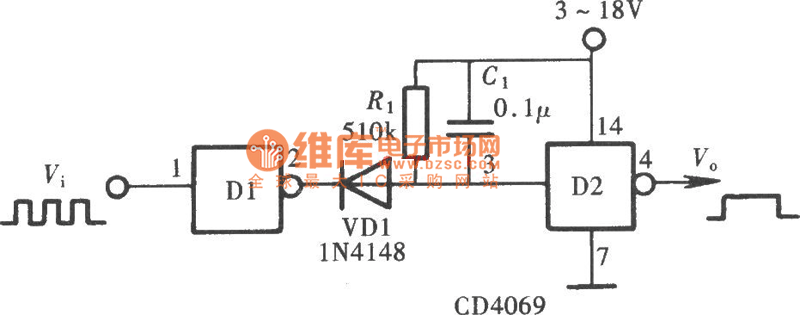
Differential super-regenerative self-limiting FM demodulator
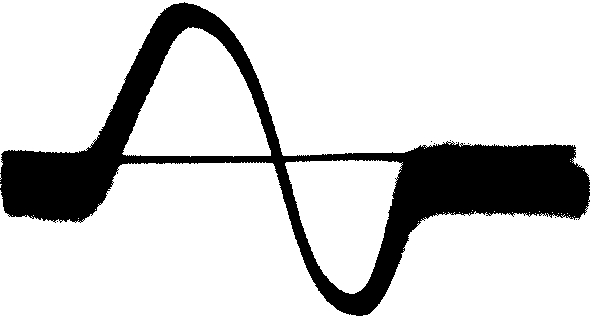
The following is a translation of a section from the first book of the three-part series "Die Röhre im UKW Empfang" edited by Dr. Ing. Horst Rothe in 1952. This section describes a fully differential super-regenerative self-limiting FM detector. The circuit consists of two synchronized self-quenched FM super-regenerative detectors that are detuned from each other to achieve a symmetric S-curve characteristic. This information is derived from the chapter on super-regenerative receivers, which can be found in the original German as a PDF attachment at Der Pendelempfang für UKW. The initial translation was performed using Google and Bing translators, followed by editing and proofreading by Dr. Dietmar Rudolph. A symmetrical circuit based on the off-tune discriminator can be constructed with two super-regenerative stages in the same design. This concept was first proposed in British Patent No. 571 580 (1942), which discusses the limiting effect but contains an error regarding its operation. G. Vogt and the author have both applied this principle, where both self-quenched stages operate with the same quench frequency, ensuring synchronization and high sensitivity. This synchronization prevents one super-regenerative stage from being influenced by strong oscillations in the other. The requirements for mutual decoupling are easily met with synchronous operation, making the circuit feasible even with a double triode such as EDD11 when operated with a moderate intermediate frequency. It is anticipated that such a differential super-regenerative circuit, equipped with an audio push-pull output, would exhibit a limiting effect similar to that of a conventional ratio detector. For instance, Vogt has mathematically deduced this limiting operation for the logarithmic differential super-regenerative circuit. In the balanced output, an interfering AM rectified current induces differential currents when the received frequency deviates from the central position, particularly within the modulation bandwidth of the channel. A differential super-regenerative circuit, designed as self-quenched with a shared blocking capacitor, has been reviewed by the author. This configuration offers the advantage of operating nearly logarithmically with amplitude changes while remaining almost linear with frequency changes. The time sweep of both grid voltages for two interconnected tubes during the oscillation growth period is illustrated. The negative grid charge of the self-quenched tubes accumulates from the sum of the grid current of both tubes, which likely varies with signal amplitude changes, but remains constant with frequency variations, as the oscillation amplitude of one tube increases while the other decreases. With this differential super-regenerative circuit implemented using an EDD11 tube at an intermediate frequency of 21 MHz, a limiter ratio exceeding 10 was achieved across the entire operating voltage range. The limiting effect remains significantly high even with relatively low field strengths. Due to inherent differences between the two triodes, symmetry control is integrated into the grid circuit current. This circuit is designed to maximize noise when the preceding stages are deactivated. The alignment achieved in the entire differential super-regenerative stage utilizes the optimal portion of the discriminator curve, making alignment simpler than that of a ratio detector.
The fully differential super-regenerative self-limiting FM detector described operates by utilizing two synchronized detectors that are intentionally detuned from one another. This detuning is critical as it allows the circuit to achieve a symmetric S-curve characteristic, which is essential for effective FM detection. The synchronization of the self-quenched stages ensures that both detectors react simultaneously to incoming signals, enhancing sensitivity and preventing interference from strong oscillations in one stage affecting the other.
The use of a double triode, such as the EDD11, is advantageous due to its ability to operate at moderate intermediate frequencies, facilitating the implementation of this differential circuit design. The mathematical principles underlying the limiting effect have been validated, showing that this configuration can effectively limit the output signal in a manner similar to traditional ratio detectors. The differential nature of the circuit allows it to handle amplitude variations logarithmically while maintaining linearity with frequency changes, which is beneficial for processing complex signals.
The integration of a shared blocking capacitor between the two super-regenerative stages not only simplifies the circuit design but also enhances performance by improving the overall noise characteristics. The differential output is particularly responsive to variations in the received frequency, allowing for effective AM signal rectification without significant distortion.
Additionally, the circuit's design incorporates symmetry control features to mitigate discrepancies between the two triodes, ensuring consistent performance across varying conditions. The alignment process is streamlined compared to conventional detectors, making it easier to achieve optimal performance. Overall, this differential super-regenerative self-limiting FM detector represents a sophisticated approach to FM signal processing, combining innovative design with practical advantages for enhanced reception and signal fidelity.The following is a translation of a section from the first book of the 3 part series "Die RG¶hre im UKW EmpfG¤ng" edited by Dr. Ing. Horst Rothe in 1952. This very interesting section describes a fully differential super-regenerative self-limiting FM detector.
The circuit is comprised of two synchronized self-quenched FM super-regenerative detecto rs which are detuned from each other to achieve a symmetric S-curve characteristic. This section came out of the chapter on super-regenerative receivers, which can be found in the original German as a pdf attachment at Der Pendelempfang fG r UKW I used the Google and Bing translators to get a first translation. I edited this automated translation result and our own Dr. Dietmar Rudolph proof read the final copy. Thank you Herr Rudolph for your continuing help with translations. A symmetrical circuit according to the off-tune discriminator [illustrated in figure 6-16] [13], [15] can be constructed with two super-regenerative stages in the same design.
Such was first proposed in British Patent No. 571 580 (1942) [ GB571580 at Espacenet ], which is about the limiting effect, however, it contains an error about the operation of the limiting effect. G. Vogt and the author of this principle have both applied this principle, in the form that both self-quenched stages are operated with the same quench frequency.
Both stages are then always synchronized and are highly sensitive and at the same point in time. This keeps one super-regenerative stage from being affected by simultaneous strong oscillations in the other. The requirements for the mutual decoupling are easy to fulfill with synchronous operation, so that the circuit is feasible even with a double triode such as EDD11, when it is operated with an IF that is not too high.
It was to be expected now that such a differential super-regenerative circuit would, with an Audio push-pull output, also have a limiting effect which is similar to the well known limiting of the ratio detector. Vogt has, for example, deduced this limiter operation mathematically for the logarithmic differential Super-Regenerative circuit.
In the balanced output, an interfering AM rectified current causes differential currents when the received frequency differs from the central position. This is true at least for the region that corresponds to the width of the modulation of the channel. A differential Super-Regenerative circuit was reviewed by the author, which was designed as self-quenched with the Csp blocking capacitor shared by the two Super-Regenerative stages (Fig.
20). This could achieve a further advantage: such a differential stage works nearly logarithmically with amplitude changes, however, for frequency changes it works almost linearly. Figure 21 shows the time sweep of both grid voltages for two interconnected tubes during the growing oscillation period.
The negative grid charge of the self-quenched tubes is accumulated by the sum of the grid current of the two tubes, and these probably change with signal amplitude variations, however, these currents remain constant with changes in frequency because the oscillation amplitude of a tube increases the same as the other decreases. With this differential super-regenerative circuit which was executed with a EDD11 tube for an intermediate frequency of 21 MHz, a limiter ratio over 10 could be achieved over the entire working voltage range.
The limiting effect is advantageously very high even with a relatively small field strength. Because of the inevitable differences between the two Triodes, symmetry control is provided in the grid circuit current. This circuit is set up so that a maximum of noise is heard when the preceding stages are turned off. The alignment achieved in the whole differential super-regenerative stage uses the best portion of the discriminator curve, and the alignment is easier than that of a ratio detector.
However, the grid cur 🔗 External reference
The fully differential super-regenerative self-limiting FM detector described operates by utilizing two synchronized detectors that are intentionally detuned from one another. This detuning is critical as it allows the circuit to achieve a symmetric S-curve characteristic, which is essential for effective FM detection. The synchronization of the self-quenched stages ensures that both detectors react simultaneously to incoming signals, enhancing sensitivity and preventing interference from strong oscillations in one stage affecting the other.
The use of a double triode, such as the EDD11, is advantageous due to its ability to operate at moderate intermediate frequencies, facilitating the implementation of this differential circuit design. The mathematical principles underlying the limiting effect have been validated, showing that this configuration can effectively limit the output signal in a manner similar to traditional ratio detectors. The differential nature of the circuit allows it to handle amplitude variations logarithmically while maintaining linearity with frequency changes, which is beneficial for processing complex signals.
The integration of a shared blocking capacitor between the two super-regenerative stages not only simplifies the circuit design but also enhances performance by improving the overall noise characteristics. The differential output is particularly responsive to variations in the received frequency, allowing for effective AM signal rectification without significant distortion.
Additionally, the circuit's design incorporates symmetry control features to mitigate discrepancies between the two triodes, ensuring consistent performance across varying conditions. The alignment process is streamlined compared to conventional detectors, making it easier to achieve optimal performance. Overall, this differential super-regenerative self-limiting FM detector represents a sophisticated approach to FM signal processing, combining innovative design with practical advantages for enhanced reception and signal fidelity.The following is a translation of a section from the first book of the 3 part series "Die RG¶hre im UKW EmpfG¤ng" edited by Dr. Ing. Horst Rothe in 1952. This very interesting section describes a fully differential super-regenerative self-limiting FM detector.
The circuit is comprised of two synchronized self-quenched FM super-regenerative detecto rs which are detuned from each other to achieve a symmetric S-curve characteristic. This section came out of the chapter on super-regenerative receivers, which can be found in the original German as a pdf attachment at Der Pendelempfang fG r UKW I used the Google and Bing translators to get a first translation. I edited this automated translation result and our own Dr. Dietmar Rudolph proof read the final copy. Thank you Herr Rudolph for your continuing help with translations. A symmetrical circuit according to the off-tune discriminator [illustrated in figure 6-16] [13], [15] can be constructed with two super-regenerative stages in the same design.
Such was first proposed in British Patent No. 571 580 (1942) [ GB571580 at Espacenet ], which is about the limiting effect, however, it contains an error about the operation of the limiting effect. G. Vogt and the author of this principle have both applied this principle, in the form that both self-quenched stages are operated with the same quench frequency.
Both stages are then always synchronized and are highly sensitive and at the same point in time. This keeps one super-regenerative stage from being affected by simultaneous strong oscillations in the other. The requirements for the mutual decoupling are easy to fulfill with synchronous operation, so that the circuit is feasible even with a double triode such as EDD11, when it is operated with an IF that is not too high.
It was to be expected now that such a differential super-regenerative circuit would, with an Audio push-pull output, also have a limiting effect which is similar to the well known limiting of the ratio detector. Vogt has, for example, deduced this limiter operation mathematically for the logarithmic differential Super-Regenerative circuit.
In the balanced output, an interfering AM rectified current causes differential currents when the received frequency differs from the central position. This is true at least for the region that corresponds to the width of the modulation of the channel. A differential Super-Regenerative circuit was reviewed by the author, which was designed as self-quenched with the Csp blocking capacitor shared by the two Super-Regenerative stages (Fig.
20). This could achieve a further advantage: such a differential stage works nearly logarithmically with amplitude changes, however, for frequency changes it works almost linearly. Figure 21 shows the time sweep of both grid voltages for two interconnected tubes during the growing oscillation period.
The negative grid charge of the self-quenched tubes is accumulated by the sum of the grid current of the two tubes, and these probably change with signal amplitude variations, however, these currents remain constant with changes in frequency because the oscillation amplitude of a tube increases the same as the other decreases. With this differential super-regenerative circuit which was executed with a EDD11 tube for an intermediate frequency of 21 MHz, a limiter ratio over 10 could be achieved over the entire working voltage range.
The limiting effect is advantageously very high even with a relatively small field strength. Because of the inevitable differences between the two Triodes, symmetry control is provided in the grid circuit current. This circuit is set up so that a maximum of noise is heard when the preceding stages are turned off. The alignment achieved in the whole differential super-regenerative stage uses the best portion of the discriminator curve, and the alignment is easier than that of a ratio detector.
However, the grid cur 🔗 External reference
